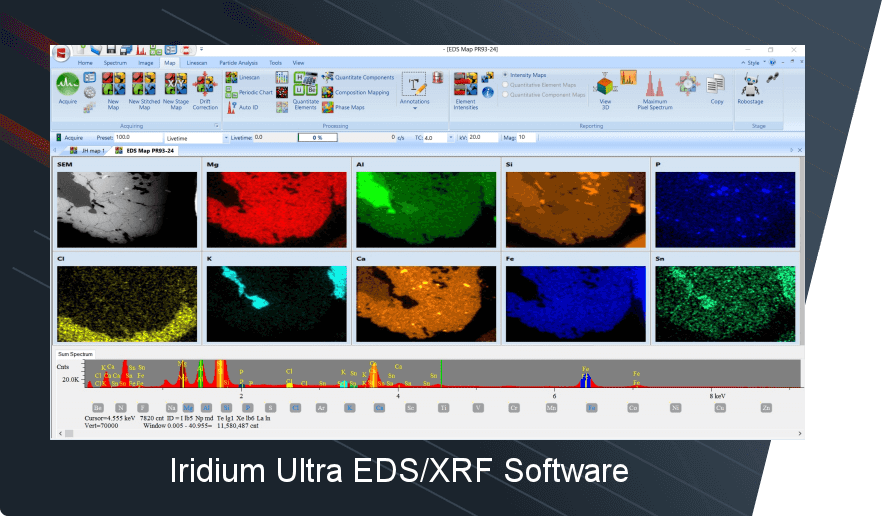Micro-X-ray Fluorescence (microXRF, microEDXRF, µXRF, µEDXRF) is a burgeoning analytical technology that has taken the scientific world by storm. It is a powerful complement to synchrotron X-ray fluorescence microscopy beamlines. To understand the numerous benefits offered by lab-based microXRF, it is vital to appreciate the distinct attributes of both analytical techniques.
Understanding Lab-based MicroXRF and Synchrotron-based XFM
X-ray fluorescence microscopy from a synchrotron beamline is a well-established method used to analyze materials down to the sub-micron spatial resolution scale. It uses highly intense monochromatic X-ray beams produced by a synchrotron light source. However, despite its high resolution and powerful capabilities, it has limitations, namely, very limited access with little opportunity for experimental iteration during use. That is, the investigators cannot readily adjust acquisition conditions as a result of data observations from initial synchrotron beamline experiments.
On the other hand, lab-based MicroXRF is a non-destructive analytical technique that typically uses polychromatic X-ray beams to map the elemental composition of a sample down to 5 μm spatial resolution. It is gaining more attention due to its decentralized availability (as compared to synchrotrons), flexibility, ease of use, and ability to provide equally reliable and high-quality data.

Figure 1. X-ray elemental maps of whole Gossia Fragrantissima leaves generated from ANSTO synchrotron XFM beamline and the Atlas lab-based microXRF from IXRF Systems at the Centre for Microscopy and Microanalysis (CMM) at the University of Queensland, Australia. Metallomics, Volume 13, Issue 4, April 2021, mfab008
Advantages of MicroXRF Over Synchrotron-based X-ray Microscopy
Accessibility
MicroXRF systems can be installed in any lab, making them more accessible to scientists and researchers. In contrast, synchrotron-based X-ray microscopy necessitates using expensive and inaccessible centralized facilities. Synchrotrons are expensive to build and maintain and are limited in number worldwide (approximately 60), thereby making lab-based MicroXRF a more approachable choice.
Operational Simplicity
MicroXRF setup and operation requires less technical expertise than synchrotron-based X-ray microscopy. As a result, a broad range of professionals can handle and maintain MicroXRF equipment, thus simplifying the process and making it more inclusive.
Non-Destructive Analysis
While both methods are non-destructive, MicroXRF is known for its extremely low risk of causing any sample damage. This makes it a preferred choice, especially when dealing with sensitive or valuable materials.
Flexibility
MicroXRF systems have high flexibility regarding sample type, size, and shape. As a result, they can analyze larger and more diverse samples than synchrotron-based X-ray microscopy.
Reduced Costs
From a financial perspective, MicroXRF equipment is more affordable regarding initial investment and operational costs. In addition, the cost-effectiveness of MicroXRF extends to the iterative research process, minimizing the overall costs involved.
Quality of Data
Although synchrotron radiation sources provide high-resolution images, MicroXRF can produce comparable data in terms of quality and resolution, making it a valuable tool in various scientific applications.
Conclusion
While Synchrotron-based X-ray microscopy remains a vital instrument in many research fields, the emergence of MicroXRF technology has provided a cost-effective, accessible, and flexible alternative for a broad range of applications. As a result, it is gradually transforming the landscape of materials analysis, proving that top-notch scientific advancements don’t necessarily require substantial infrastructure investment.
It’s clear that MicroXRF presents many benefits, enabling the democratization of high-resolution X-ray analysis. As we progress, we can expect further improvements in MicroXRF technology, cementing its place as a crucial tool in scientific and industrial research.


